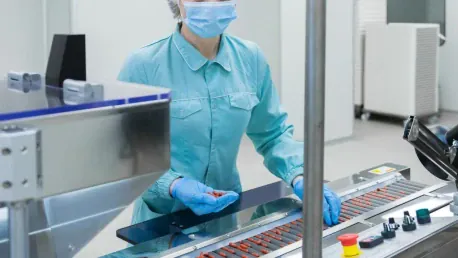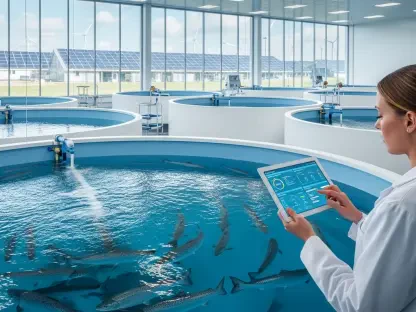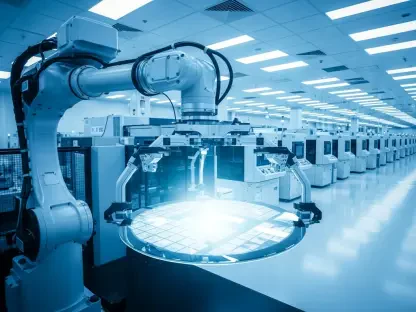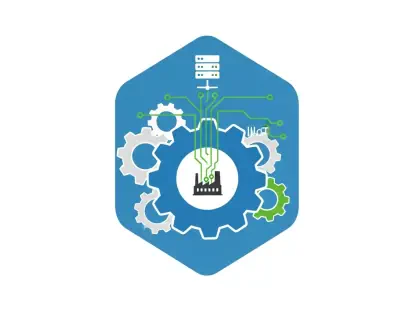The article by Black Book Research provides insights into the growing trend of reshoring U.S. healthcare manufacturing. The comprehensive survey of pharmaceutical and biotech manufacturing executives highlights the pivotal factors influencing this movement.
The Drivers Behind Reshoring
Tariff Incentives and Federal Initiatives
An essential impetus for reshoring includes the recent introduction of tariffs and economic incentives, making the shift more appealing for many U.S.-based manufacturers. These tariffs and incentives are designed to make domestic production more financially viable compared to reliance on foreign facilities. The federal government has taken proactive steps to reinvigorate domestic manufacturing through fiscal policies aimed at encouraging companies to set up new facilities or expand their existing ones within U.S. borders.
Additionally, the combination of tariff protections and financial incentives has created a favorable business environment for healthcare manufacturers. This environment mitigates the financial disparities between domestic and international production, thus motivating companies to reconsider the benefits of reshoring. These fiscal strategies highlight the government’s commitment to reducing foreign dependency and strengthening national production capabilities.
Technological Advancements
Automation and advanced technology such as robotics, artificial intelligence (AI), and predictive analytics are significantly enhancing production capabilities, prompting a move towards domestic production. The integration of these cutting-edge technologies streamlines various manufacturing processes, thereby boosting efficiency and reducing the need for manual intervention. This technological leap allows for faster production cycles and minimizes human errors, resulting in higher-quality healthcare products.
Moreover, the application of AI and predictive analytics enables manufacturers to optimize their supply chains by forecasting demand accurately and managing inventory more effectively. Robotics, on the other hand, plays a crucial role in automating repetitive and high-precision tasks, which further enhances the overall efficiency of the production line. This technological prowess not only positions the U.S. at the forefront of healthcare manufacturing but also creates a compelling case for reshoring operations.
Geopolitical and Regulatory Shifts
The ongoing geopolitical uncertainties and regulatory complexities in foreign locations are pushing companies to reshore their manufacturing operations to the U.S. The global landscape has seen increased volatility, with trade tensions, sanctions, and political instability frequently disrupting international supply chains. These factors have underscored the risks associated with offshoring and highlighted the need for more stable and secure production environments closer to home.
In addition to geopolitical instability, regulatory complexities in foreign countries can pose challenges for U.S.-based companies. Varying regulatory standards, compliance requirements, and quality control measures across different regions can complicate operations and increase costs. By reshoring manufacturing, companies can align more easily with the rigorous standards set by U.S. regulatory agencies, ensuring consistent compliance and high product quality.
Navigating Economic and Regulatory Realities
Automation and Job Specialization
With a strong reliance on automation, the new domestic facilities are expected to move from traditional manufacturing jobs to highly specialized, compliance-driven roles. This shift implies that while a large number of traditional manufacturing jobs may be automated, there will be an increasing demand for skilled workers adept in operating, maintaining, and managing these advanced technologies. These specialized roles are integral to ensuring the seamless functioning of automated systems and adherence to compliance standards.
This trend reflects a broader transformation in the labor market, where job opportunities are evolving to meet the demands of an increasingly automated and technologically-driven manufacturing landscape. Companies will need to invest in workforce development programs to equip their employees with the necessary skills and expertise. This transition towards job specialization underscores the changing nature of domestic manufacturing, where human oversight and technological expertise become paramount.
Compliance Environment
The stringent compliance standards of the FDA, EPA, and OSHA in the U.S. are seen as contributors to increased product quality and public trust, despite the higher costs and regulatory challenges. These agencies enforce rigorous safety, quality, and environmental regulations that ensure the manufacture of high-quality healthcare products. Compliance with these standards is essential for gaining and maintaining consumer trust, particularly in an industry where safety and efficacy are of utmost concern.
While meeting these compliance requirements can be challenging and costly, the long-term benefits include enhanced product reliability and reputational integrity. Companies must navigate complex regulatory frameworks and invest in compliance infrastructure to ensure continuous adherence. This investment in compliance ultimately translates to higher-quality products that meet the stringent expectations of the U.S. market, thereby fostering public confidence and trust in domestically manufactured healthcare products.
Emerging Trends and Industry Consensus
Support for Reshoring
A substantial majority of executives support reshoring as a strategic imperative, underlining its importance for national security and reduced dependency on foreign supply chains. The sentiment reflects a collective realization that domestic manufacturing is integral to safeguarding the nation’s healthcare supply chain. The COVID-19 pandemic significantly exposed the vulnerabilities associated with heavy reliance on foreign sources, prompting a reevaluation of reshoring priorities.
Reshoring not only addresses these critical security concerns but also aligns with broader economic objectives. It promises to revitalize the domestic economy by stimulating production, creating jobs, and fostering innovation in advanced manufacturing technologies. This strategic shift is supported by a growing consensus among industry leaders who recognize the long-term benefits of having a resilient and secure domestic healthcare manufacturing infrastructure.
Employment Trends
Despite the announcement of numerous reshoring jobs, the majority are expected to be limited or highly specialized positions due to the degree of automation involved. The transformation of the labor market, characterized by a shift towards technology-driven roles, necessitates workers who possess advanced technical skills. These roles are pivotal in ensuring the efficient operation of automated systems and maintaining regulatory compliance.
This evolution of employment trends highlights the need for targeted workforce development initiatives to bridge the skills gap. Companies and educational institutions must collaborate to provide training programs that equip workers with the necessary skills to thrive in a technology-centric manufacturing environment. Although automation may reduce the number of traditional manufacturing jobs, it simultaneously creates opportunities for specialized, high-skill employment, driving innovation and productivity in the healthcare sector.
Streamlining Manufacturing Processes
Adoption of Robotics and AI
The industry has seen a significant surge in the adoption of robotics and AI in recent years, reflecting a broader trend toward embracing advanced manufacturing processes domestically. Between 2020 and 2025, the adoption of these technologies surged by 70%, showcasing a marked shift towards automation. This trend is indicative of the industry’s drive to enhance production efficiency, reduce human errors, and increase overall output.
The integration of robotics and AI in manufacturing processes facilitates precise control and monitoring of various production stages. AI-driven analytics enable companies to predict maintenance needs, optimize resource allocation, and improve decision-making processes. Robotics, meanwhile, ensures consistent quality by performing tasks with high precision and minimal variation. These advancements underscore the industry’s commitment to leveraging technology to achieve operational excellence and remain competitive in the global market.
Regulatory Compliance vs. Costs
While heightened regulatory compliance enhances product quality and public trust, it comes at a higher initial procurement cost, impacting overall budgeting and negotiations. Compliance with the stringent standards set by U.S. regulatory agencies requires significant investments in infrastructure, technology, and skilled personnel. These investments are crucial for ensuring that manufacturing processes adhere to safety, quality, and environmental regulations.
The higher costs associated with regulatory compliance can influence pricing strategies and procurement negotiations. Manufacturers need to account for these expenses when developing their pricing models and engaging with suppliers and buyers. Despite the increased costs, the long-term benefits of compliance—such as enhanced product quality, reduced liability risks, and improved consumer trust—outweigh the initial financial burdens. Companies that prioritize regulatory adherence build a strong foundation for sustainable growth and long-term success.
Global Context and Comparisons
Critical API Dependencies
The high dependency on imported active pharmaceutical ingredients (APIs) during the COVID-19 pandemic made supply chain vulnerabilities more apparent, accelerating reshoring evaluations. Currently, over 80% of the U.S.’s APIs are imported, primarily from China and India. This reliance on foreign sources has exposed significant risks, including potential disruptions due to geopolitical tensions, trade restrictions, and logistical challenges.
Companies are increasingly recognizing the need to mitigate these risks by establishing domestic API production capabilities. By reshoring API manufacturing, the U.S. can reduce its dependency on foreign suppliers, enhance supply chain resilience, and ensure a consistent supply of critical components. This strategic shift is pivotal in safeguarding the healthcare sector against future disruptions and maintaining the integrity of the supply chain.
Broader Global Trends
Reshoring in the U.S. is part of a larger global trend with a majority of global manufacturers considering similar strategies to bolster operational resilience and mitigate risks. According to Black Book’s manufacturing insights, an estimated 80% of global manufacturers are evaluating reshoring or nearshoring strategies. This widespread reassessment of supply chain strategies underscores a collective response to the vulnerabilities exposed by recent global events.
Manufacturers worldwide are prioritizing resilience and sustainability by bringing production closer to their key markets. This approach not only addresses immediate supply chain risks but also positions companies to respond more effectively to future disruptions. The global movement towards reshoring reflects a broader recognition of the importance of secure, stable, and reliable supply chains in maintaining operational continuity and meeting consumer demands.
Conclusion
The article by Black Book Research delves into the emerging trend of reshoring healthcare manufacturing back to the United States. Through a detailed survey, the study captures the perspectives of pharmaceutical and biotech manufacturing executives on this movement. The key focus of the report is to underline the critical factors driving this shift. It appears that reshoring is gaining momentum as companies seek to enhance supply chain resilience, reduce dependency on foreign manufacturing, and respond to geopolitical tensions. The intent to improve product quality and regulatory compliance also fuels the trend. Additionally, reshoring aims to boost domestic job creation and support local economies. The study highlights how these strategic priorities are shaping the future of U.S. healthcare manufacturing, providing a clearer understanding of the industry’s direction. As changes continue to unfold, the insights from this survey serve as a valuable guide for stakeholders looking to navigate the evolving landscape efficiently.









